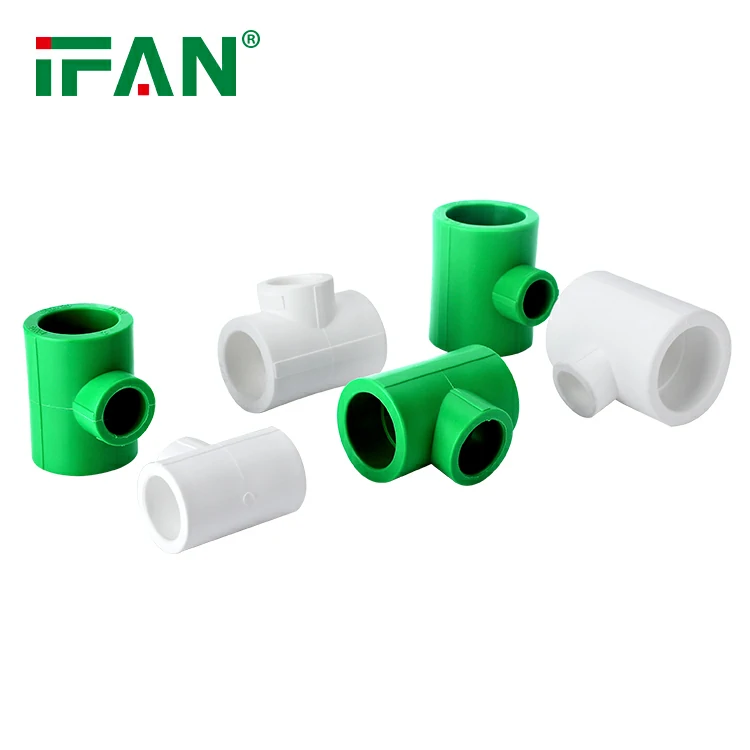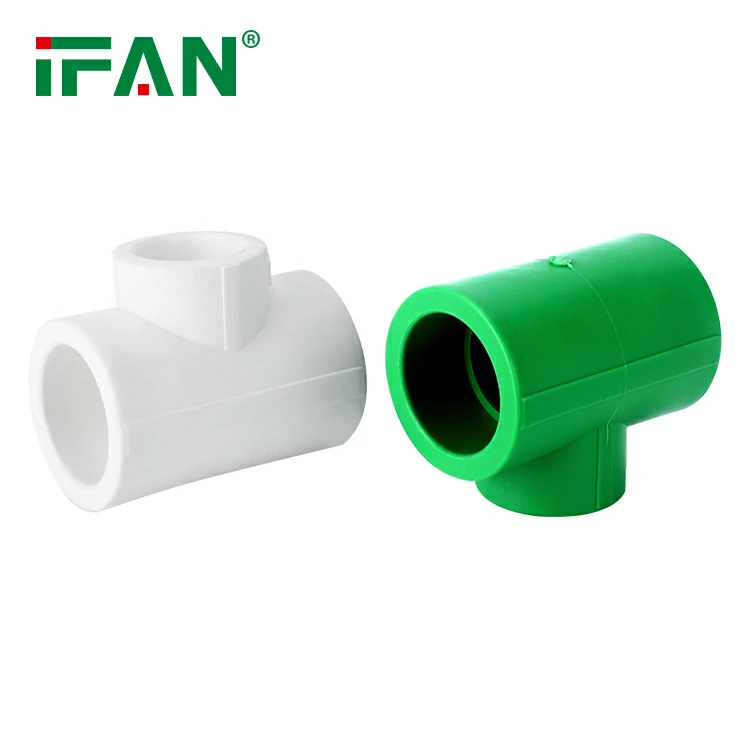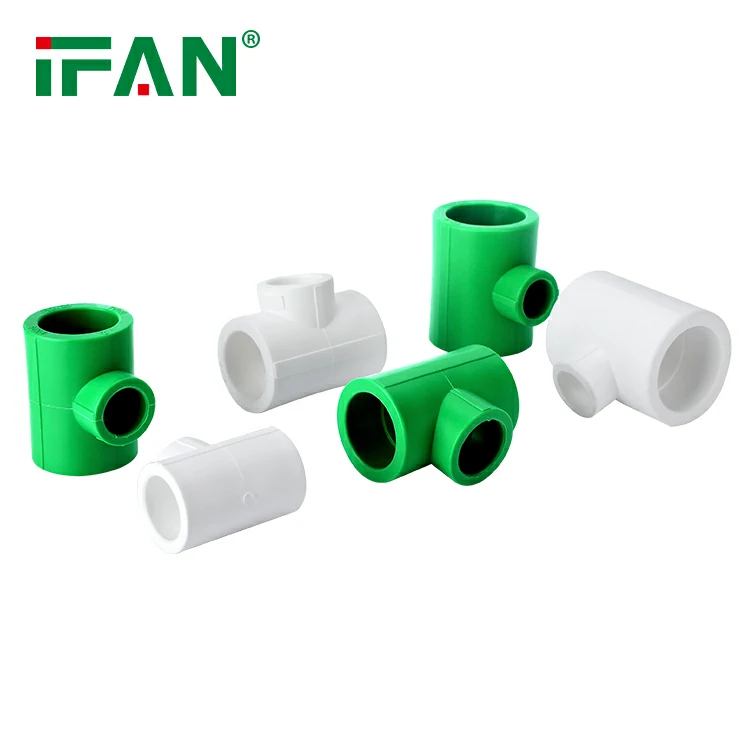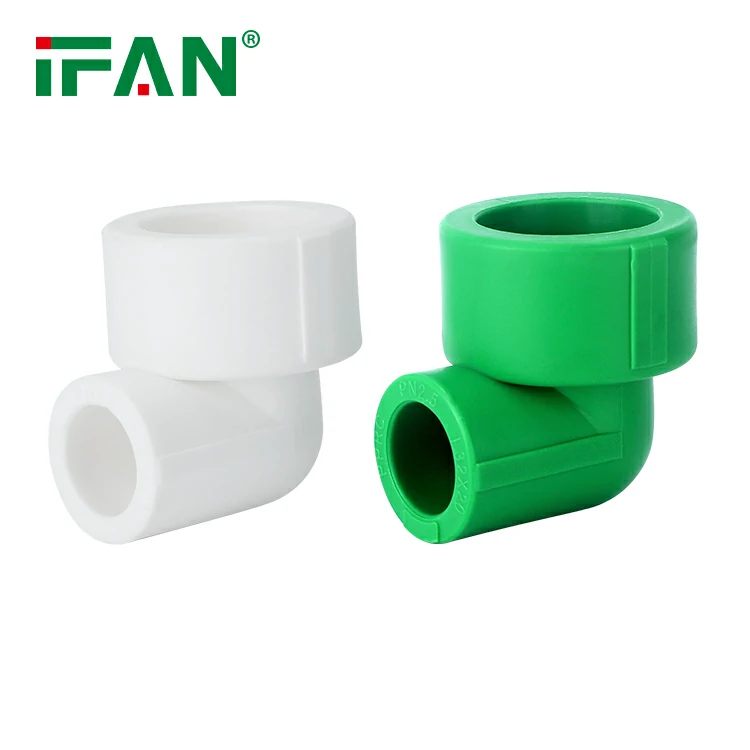IFAN factory 30+ years manufacture experience support color /size customization support free sample.Welcome to consult for catalog and free samples.This is our Facebook Website:www.facebook.com,Click to watch IFAN’s product video.Compared with Tomex products, our IFAN products from quality to price are your best choice, welcome to buy!
CPVC (Chlorinated Polyvinyl Chloride) fittings have become a popular choice in industrial plumbing due to their superior durability, heat resistance, and cost-effectiveness. As industries continuously seek reliable materials for their piping systems, understanding the long-term performance of CPVC fittings becomes essential. This article delves into the durability of CPVC fittings in industrial plumbing, covering their properties, benefits, potential issues, and maintenance strategies.
What is CPVC and Why is it Ideal for Industrial Plumbing?
CPVC is a thermoplastic material that is chemically modified to withstand higher temperatures and pressures compared to standard PVC. This makes it suitable for hot water and high-pressure systems in various industrial applications. CPVC fittings, commonly used to connect pipes in plumbing systems, offer several benefits, including:
- Heat Resistance: CPVC can handle temperatures up to 200°F (93°C), making it ideal for systems that carry hot water or chemicals.
- Chemical Resistance: It is highly resistant to a wide range of chemicals, including acids, alkalis, and salts, which makes it suitable for industries like manufacturing and pharmaceuticals.
- Lightweight: Compared to metal pipes, CPVC is significantly lighter, reducing labor costs during installation and maintenance.
- Cost-Effectiveness: CPVC is relatively inexpensive, making it a cost-effective solution for industrial plumbing systems without compromising quality.
Durability Factors of CPVC Fittings
1. Chemical Resistance
CPVC’s resistance to chemicals is one of the key factors that contribute to its durability in industrial plumbing. Unlike metal pipes, CPVC does not corrode when exposed to harsh chemicals, which is a common issue in many industrial environments. CPVC can handle chemicals such as chlorine, acids, and even some solvents, making it perfect for chemical processing plants, water treatment facilities, and pharmaceutical production.
However, it is important to note that CPVC should not be exposed to certain aggressive chemicals like ketones or some hydrocarbons, which can damage the material over time.
2. Temperature Resistance
In industrial plumbing, CPVC’s ability to withstand high temperatures is another reason for its durability. It can handle hot water up to 200°F (93°C), which is higher than standard PVC. This makes it suitable for use in steam lines, industrial heating systems, and processes that require higher temperatures. When CPVC is used in such applications, its strength and integrity are maintained for years, provided it is properly installed and maintained.
However, exposure to temperatures higher than its rated capacity can lead to softening and failure of CPVC pipes and fittings, which is why temperature control is crucial in its application.
3. Resistance to Physical Stress
CPVC fittings are resistant to physical stress such as impacts and vibrations, which makes them a reliable choice for industrial environments where machinery and equipment might generate vibrations. Unlike brittle materials, CPVC has flexibility that allows it to absorb some of the physical stress, reducing the risk of cracking or breaking.
While CPVC is more resistant to physical damage compared to some other materials, excessive force or improper installation can cause it to crack or rupture. Therefore, careful handling and proper installation techniques are crucial for maximizing its lifespan.
4. Long Lifespan
CPVC fittings have a long service life, often lasting several decades when installed correctly in the right conditions. Its resistance to corrosion, chemical attack, and high temperatures contributes to its extended durability. In many cases, CPVC fittings can last between 50 to 75 years, making them a reliable option for industrial plumbing systems that require minimal maintenance.
This long lifespan reduces the frequency of repairs or replacements, leading to lower long-term costs for industrial facilities.
Common Issues Affecting CPVC Fittings
1. UV Degradation
One of the main concerns with CPVC fittings is their vulnerability to ultraviolet (UV) light. When exposed to direct sunlight, CPVC can degrade over time, leading to brittleness and cracking. This can be a particular issue in outdoor installations or areas where UV exposure is unavoidable.
Solution: To mitigate UV degradation, it is recommended to paint CPVC pipes with UV-resistant coatings or use protective covers. Alternatively, the CPVC pipes can be buried or installed in shaded areas to prevent direct sunlight exposure.
2. Improper Installation
Improper installation is a common issue that can affect the durability of CPVC fittings. If the fittings are not correctly cemented or the pipes are misaligned, it can lead to leaks, cracks, or failure of the system. Additionally, using the wrong solvent cement can result in weak bonds that fail under stress.
Solution: Always follow manufacturer instructions during installation, use the correct solvent cement, and ensure that pipes are properly aligned and cut to size. Regular inspections during the installation process can help prevent future issues.
3. Thermal Expansion and Contraction
CPVC expands and contracts with temperature fluctuations. In environments where there are significant temperature variations, CPVC fittings may experience stress due to this expansion and contraction. This can lead to leaks or damage to the system over time if not properly accounted for during installation.
Solution: To prevent issues related to thermal expansion, install expansion joints in the system or leave adequate space between pipes to allow for movement. Additionally, avoid placing CPVC pipes in areas where temperatures can fluctuate drastically.
Maintenance Tips for Extending the Lifespan of CPVC Fittings
To maximize the durability of CPVC fittings in industrial plumbing systems, it is important to perform regular maintenance. Here are a few tips:
- Regular Inspections: Periodically check the system for signs of wear, such as cracks, discoloration, or leaks. Catching small issues early can prevent major problems later on.
- Cleaning: Keep the CPVC pipes clean by flushing them regularly to prevent buildup of mineral deposits or sediment that can clog the system.
- Protection from UV Exposure: For outdoor installations, ensure CPVC pipes are shielded from direct sunlight by painting them with UV-resistant coatings or using covers.
- Temperature Monitoring: Monitor the temperature of the system and ensure CPVC is used within its temperature limits. If high temperatures are expected, consider using thermal expansion joints to prevent stress on the fittings.
Conclusion
CPVC fittings offer exceptional durability in industrial plumbing applications, thanks to their chemical resistance, temperature tolerance, and long lifespan. However, proper installation and regular maintenance are crucial to ensuring the longevity of CPVC fittings in industrial settings. By following best practices for installation, handling, and maintenance, industrial facilities can maximize the benefits of CPVC and avoid common issues that may arise.
Frequently Asked Questions (FAQs)
- How long do CPVC fittings last in industrial applications?
CPVC fittings can last 50-75 years in industrial plumbing systems with proper installation and maintenance. - Can CPVC be used for both hot and cold water systems?
Yes, CPVC is suitable for both hot and cold water systems due to its temperature resistance. - Is CPVC safe to use in chemical processing industries?
Yes, CPVC is highly resistant to a wide range of chemicals, making it an ideal choice for chemical processing and other industrial applications. - Can CPVC fittings be exposed to direct sunlight?
CPVC fittings should be protected from prolonged UV exposure as it can degrade the material over time. UV-resistant coatings or covers can help protect the pipes. - What maintenance is required for CPVC plumbing systems?
Regular inspections, cleaning, and UV protection are key maintenance practices to extend the life of CPVC fittings.





